U.S. Department of Energy Signs New Contract with Stanford University
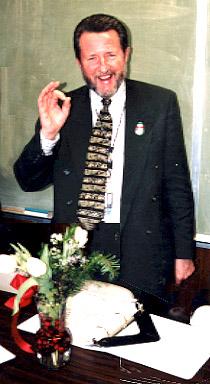
It's finally happened. After extensions and delays, hand wringing and anxiety, the contract between Stanford University and the Department of Energy was signed on December 18, 1998 in a ceremony in Burton Richter's office at SLAC.
Present for the Department of Energy were Jim Turner, manager of the DOE Oakland Operations Office; Marty Domagala, Deputy Manager; Jim Hirahara, Assistant Manager; Drayton Swartz, legal counsel; and John Muhlestein, manager of the SLAC Site Office. Also attending the ceremony were SLAC legal counsel Rachel Claus and Pillsbury, Madison, and Sutro representative Deborah Zumwalt, as well as Jerry Jobe, head of SLAC's business services division. Geoff Grant, Associate Vice President for Research Administration represented Campus.
When Turner entered Richter's office, he presented Burt with a candy cane and the quip, "Oh, you were expecting a contract?" in reference to the lengthy proceedings which lead up to this day. Turner signed the Contract on behalf of the DOE. Mariann Byerwalter, Vice President of Business Affairs & CFO, signed for Stanford University
The four-inch binder contained 197 pages of the contract and appendices from A-U which took up another 200-odd pages. "But some of those are empty," said Drayton Swartz, "since SLAC doesn't need the section on Security." Major topics in the contract are performance objectives, administration, labor and socio-economic concerns, site management, safety, financial management, records management, and intellectual property.
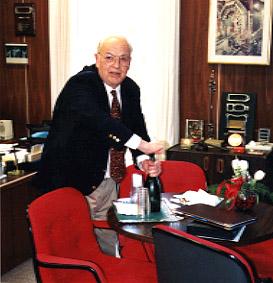
Afterwards, Richter uncorked a bottle of bubbly which dated from 1992, the date of the first contract extension. (And yes, permission was requested and granted to serve alcohol.)
There were many jokes of regret that Richter will be stepping down as Director at the end of August. "You'll have to be invited to the contract renewal in the year 2003," said Turner, referring to the new contract expiration date.
Stanford has operated SLAC on behalf of DOE for more than three decades. Established in 1962, SLAC is a world-class research facility with 1,200 employees on site, 2,800 visiting researchers from around the world, and a fiscal year 1999 budget of $177 million. Three SLAC scientists have won Nobel Physics Prizes; approximately half the Laboratory staff are degreed professionals. SLAC is devoted to using linear accelerators for experimental and theoretical research in elementary particle physics, using electron beams. In addition, synchrotron radiation scientists at SLAC conduct research in atomic and solid state physics, chemistry, biology and medicine.
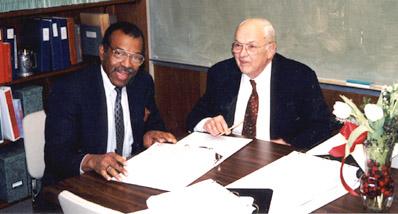
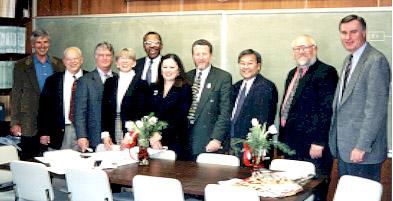
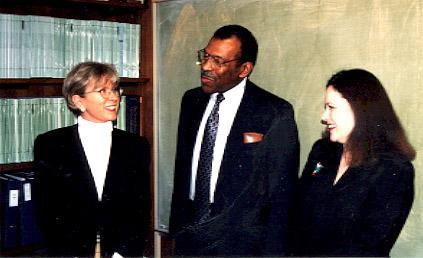
About SLAC
SLAC National Accelerator Laboratory explores how the universe works at the biggest, smallest and fastest scales and invents powerful tools used by researchers around the globe. As world leaders in ultrafast science and bold explorers of the physics of the universe, we forge new ground in understanding our origins and building a healthier and more sustainable future. Our discovery and innovation help develop new materials and chemical processes and open unprecedented views of the cosmos and life’s most delicate machinery. Building on more than 60 years of visionary research, we help shape the future by advancing areas such as quantum technology, scientific computing and the development of next-generation accelerators.
SLAC is operated by Stanford University for the U.S. Department of Energy’s Office of Science. The Office of Science is the single largest supporter of basic research in the physical sciences in the United States and is working to address some of the most pressing challenges of our time.